How Advanced Robotics and AI Are Revolutionizing Firefighting
– By Vlatka Bathgate
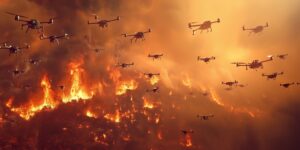
Wildfires have long been one of nature’s most destructive forces, ravaging millions of acres of land each year and costing lives, property, and vast ecological resources. As climate change and overly aggressive forest fire suppression exacerbates the conditions that lead to such disasters, the urgency to find more effective methods of controlling and mitigating fires has never been greater. Fortunately, the dawn of new forestry management, advanced robotics, AI, and autonomous systems could bring an end to the wildfire scourge in ways that were once considered the realm of science fiction. These technologies may soon enable us to prevent and control wildfires with unparalleled precision and safety.
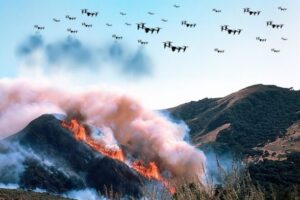
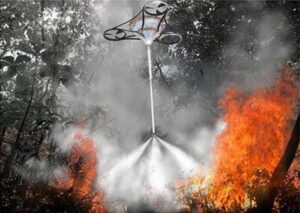
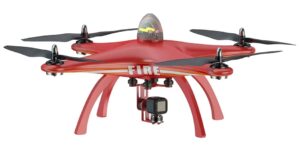
The Growing Threat of Wildfires
In recent years, wildfires have grown more intense, destructive, and frequent. From record-breaking fire seasons in California to massive wildfires in Australia and the Amazon, the escalating crisis is fueled by rising global temperatures, prolonged droughts, and widespread deforestation. Classic forest management techniques concentrated on suppressing fire at all costs, but this was discovered to be short sighted as fire was natures way of raking the underbrush and the eco system relies on fire to renew forest, indeed some trees cannot reproduce without fire. Current firefighting techniques, while effective to a degree, are often reactive and limited by the risks they pose to human crews and the unpredictability of fire behavior.
Firefighters on the ground face dangerous conditions, and the use of manned aerial fire suppression—such as helicopters and planes dropping water and fire retardant—can be both expensive and hazardous. Backburning, a technique that involves deliberately setting controlled fires to contain the spread of a wildfire, is difficult to manage and risky for the teams responsible. Clearly, we need new approaches that are both safer and more efficient.
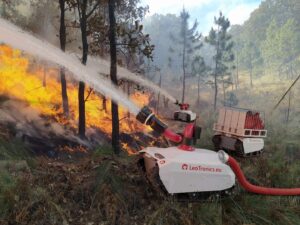

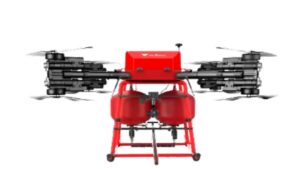
Enter Advanced Forestry Control and Robotics
In addition to extensive prescribed and controlled burns, the race to improve fire prevention and response has led engineers and scientists to turn to robotics, AI, and autonomous technology for solutions that can revolutionize the way we fight wildfires. The future may belong to “smart forests” equipped with sensors that continuously monitor environmental conditions, alongside fleets of autonomous drones and robots ready to intervene at the earliest signs of danger.
AI can manage forests, predicting when fires can be safely allowed to burn vs when aggressive suppression needs to be applied.
At the core of this emerging technology are autonomous flying and ground-based robots designed to tackle wildfires from multiple fronts. These robotic systems, leveraging advancements in AI, can operate in swarms, communicate with one another, and precisely control fires without putting human lives at risk.
Swarms of Flying Robot Drones: Aerial Firefighters of the Future
One of the most promising innovations in wildfire management is the development of aerial drones that can operate in large numbers, covering vast areas of land quickly and efficiently. There are two primary types of firefighting drones currently in development:
Incendiary Pellet Dropping Drones: These smaller, nimble drones are deployed to create controlled backburns in a highly targeted and efficient manner. By strategically igniting small, manageable fires with incendiary pellets, these drones can halt the spread of a larger wildfire by consuming the dry brush and vegetation that would otherwise fuel it. This backburn technique, traditionally dangerous for human crews, can now be conducted remotely with minimal risk.
Fire Retardant Dropping Drones: Larger, heavier drones are capable of carrying significant loads of fire retardant, which they can release over areas that are inaccessible or unsafe for human-operated aircraft. Unlike helicopters or planes, these drones can remain airborne for longer periods and can navigate more challenging weather conditions with precision. Their ability to perform continuous drops in coordination with other firefighting assets can dramatically increase the effectiveness of fire suppression efforts.
Fire-Resistant Autonomous Robots: Battling Blazes on the Ground. While aerial drones are crucial for controlling wildfires from above, the real game-changer may come from autonomous ground-based robots designed to head directly into the flames. These heavy-duty, fire-resistant robots are engineered to withstand the extreme heat and volatile conditions of an active wildfire. Equipped with advanced navigation systems, they can traverse difficult terrain and venture into areas too dangerous for human firefighters.
Fire Suppression Robots: These machines are built to deliver direct firefighting capabilities. Outfitted with powerful water cannons, foam systems, or other fire-extinguishing tools, they can confront the core of the blaze head-on. Unlike human crews, who must work at the fire’s perimeter for safety reasons, these robots can march straight into the heart of the inferno and attack the fire from within.
Forest Management and Debris Clearing: In addition to suppressing fires, autonomous robots can be used to manage forests and prevent future wildfires. By clearing dead wood, brush, and other fire-prone debris from the forest floor, these machines can reduce the fuel available for future fires. They can also dig firebreaks, helping to contain fires before they get out of control.
The Future of Wildfire Prevention
The convergence of AI, robotics, and autonomous systems in wildfire prevention represents a monumental shift in how we manage forests and respond to fires. As these technologies continue to evolve, we may soon reach a point where wildfires, once considered uncontrollable acts of nature, are no longer such a devastating threat.
Imagine a future where smart forests are constantly monitored by a network of sensors that detect the first signs of danger, triggering fleets of aerial and ground-based robots to respond before the fire can spread. Controlled backburns can be ignited with precision, and wildfires can be suppressed with greater accuracy than ever before, all without endangering human lives.
With these advancements, wildfire management will become more proactive, focusing on forest health and fire prevention, rather than reacting to fires once they are already raging. Autonomous machines will be able to manage forests year-round, ensuring that the conditions for wildfires are minimized and that any fires that do ignite are swiftly and safely controlled.
As we stand on the brink of this technological revolution, it’s clear that the days of relying solely on human firefighters to battle massive wildfires are numbered. With the deployment of AI, drones, and autonomous robots, we are entering a new era where wildfires could soon become a problem of the past. While there will always be challenges in managing natural ecosystems, the application of advanced technology could dramatically shift the balance in our favor—saving lives, protecting communities, and preserving our environment for future generations.
© 2024 Vlatka Bathgate. All rights reserved.
